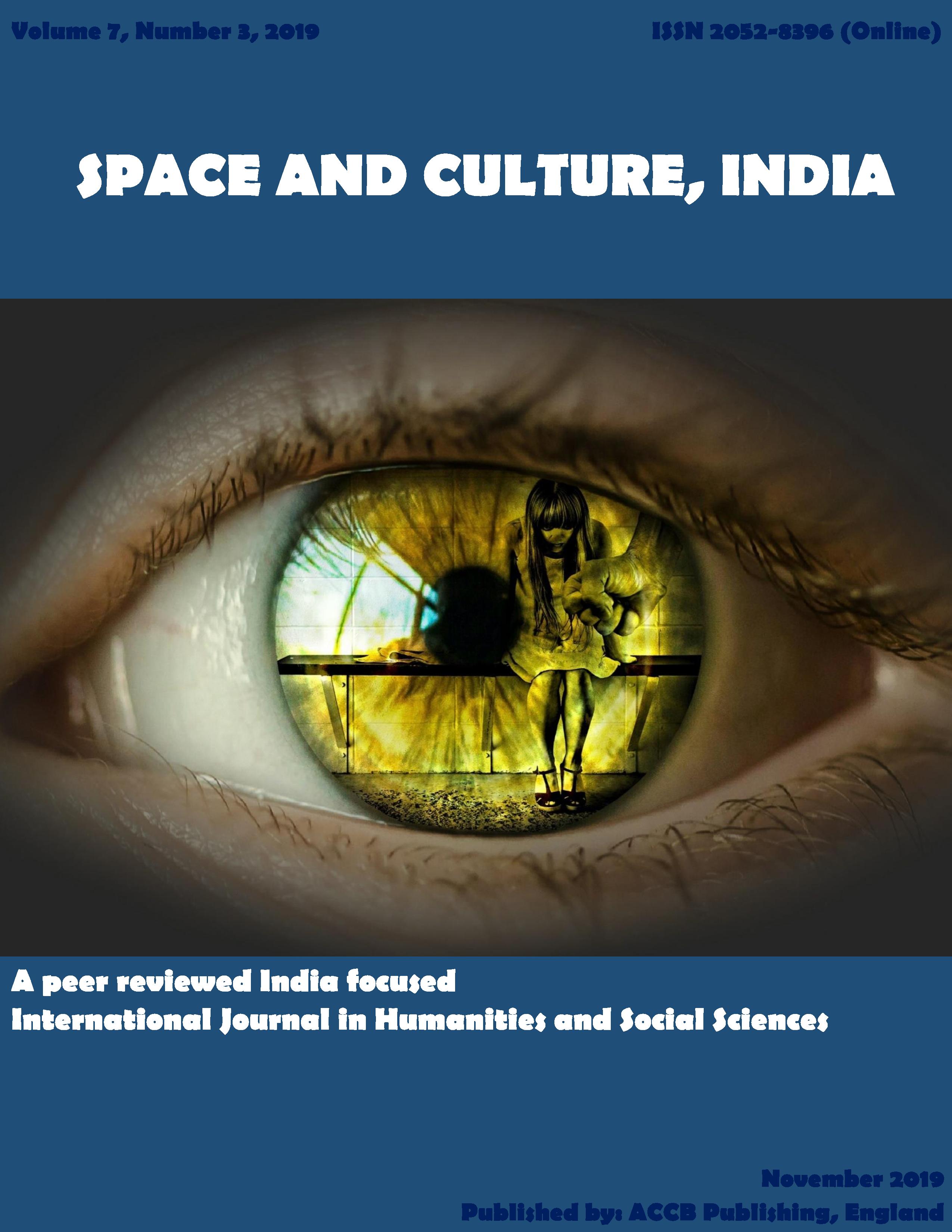Critical Thinking in the Digital Age: Strategies of Human Resource Management

Abstract
The research introduces a strategy of utilising critical thinking (CT) as an instrument of developing professional skills set in the digital age. The research aims to evaluate the potential of CT in human resources management (HRM). It has been established that the strategy of CT offers a way of intellectual improvement within the framework of professional communication. Therefore, a systematic fostering of CT allows for successful integration of affective and cognitive aspects of communication in the context of HRM.
Conversely, this research has identified the potential of the offered strategy in change- and risk management. The CT strategy has proved itself to be an effective way of professional decision-making in key cognitive aspects as well as in effective ones (intellectual courage, perseverance, confident reasoning, independent thinking in tandem with overcoming egocentrism and sociocentrism). Based on the results of the empirical research within the modern digital environment, the long-term efficiency of the offered strategy has been substantiated; the researchers have outlined the potential ways of implementing the results of the study, as well as strategy’s growth point.
Keywords
Management; Human Resource; Digital Generation; Critical Thinking; Strategies of Critical Thinking; Affective Strategies; Cognitive Strategies; Potential
References
- Al Jarrah, H. Y. (2019). Six Thinking Hats: An Analysis of the Skill Level of Jordanian Vocational Education Teachers and the Extent of Skill Application. Space and Culture, India, 7(1), 170-185. doi: 10.20896/saci.v7i1.470 DOI: https://doi.org/10.20896/saci.v7i1.470
- Bermingham, M. (2015). Clearing up “Critical Thinking”: Its Four Formidable Features. Creative Education, 6(04), 421. doi: 10.4236/ce.2015.64042 DOI: https://doi.org/10.4236/ce.2015.64042
- Broadbent, E., Gougoulis, J., Lui, N., Pota, V., & Simons, J. (2017). Generation Z: global citizenship survey. What the World’s Young People Think and Feel? (pp. 120). London: Varkey Foundation.
- Dalio, R. (2018). Principles: Life and Work (pp. 608). Moscow: Mann, Ivanov & Ferber.
- Elder, L., & Paul, R. (2019). The Thinker's Guide to Analytic Thinking: How to Take Thinking Aapart and What to Look for When You do. London: Rowman & Littlefield.
- Facione, P. (1990). Critical Thinking: A Statement of Expert Consensus for Purposes of Educational Assessment and Instruction (The Delphi Report). Retrieved on 12 January 2018 from, https://philarchive.org/archive/FACCTA
- Facione, P. A., & Facione, N. C. (1994). Holistic Critical Thinking Scoring Rubric: A Tool for Developing and Evaluating Critical Thinking. Retrieved on July, 19, 2007 from, http://www.deanza.edu/slo/icctaskforce/sample_rubric_gittens.pdf
- Franks, B. (2014). Taming the Big Data. Finding Opportunities in Huge Data Streams with Advanced Analytics (pp. 352). Мoscow: Mann, Ivanov & Ferber.
- Halpern, D. (2000). Critical Thinking Psychology (pp. 512). St.Petersburg: Piter.
- Higa, D. (2016). Meet Generation Z: The Digital Natives. Retrieved on 12 January 2018 from, http://kaohana.windward.hawaii.edu/2016/02/meet-generation-z-the-digital-natives/
- Hiring 2013 College Graduates (2013). Retrieved on 12 January 2018 from, https://www.shrm.org/hr-today/trends-and-forecasting/research-and-surveys/Pages/hiring2013collegegraduates.aspx
- Horovitz, B. (2012). After Gen X, Millennials, What Should Next Generation be? USA TODAY. Retrieved on 12 January 2018 from,http://usatoday30.usatoday.com/money/advertising/story/2012-05-03/naming-the-next-generation/54737518/1
- Israfilov, N.T., Shnyreva, E.A., Panfilova, E.E., Bozhko, L.M. & Konstantinov, V.A. (2019). Market Information and Entrepreneurship Education: A Case of Transition Economies. Journal of Entrepreneurship Education, 22 (3), 1528-2651-22-3-383.
- Ivanova, O. E., Ryabinina, E. V., & Tyunin, A. I. (2019). Pragmatic Constructivism as a Soft-Methodology of the HRM Concept. International Transaction Journal of Engineering, Management, & Applied Sciences & Technologies, 10 (2), 245-253.
- Kalashnikova, N. (2015). The Role of Critical Thinking in Innovative Social Environment Formation. The Newsletter of the Volgograd State University. Series 7. Philosophy, 4 (30), 127-133. doi: 10.15688/jvolsu7.2015.4.16
- Kalashnikova, N., & Tokareva, S. (2016). Critical Thinking and Logical Culture of Personality and the Models of the Possible World. The Newsletter of the Volgograd state university. Series 7. Philosophy, 4 (34), 183-187. doi: 10.15688/jvolsu7.2015.4.16 DOI: https://doi.org/10.15688/jvolsu7.2015.4.16
- Klimanova, А. (2016). Ideas about Critical Thinking in the Minds of Today's Youth. The Newsletter of Herzen State Pedagogical University of Russia, 180, 51-58.
- Kuh, G. D. (2001). The National Survey of Student Engagement: Conceptual framework and overview of psychometric properties. Bloomington, IN: Indiana University Center for Postsecondary Research, 126.
- Maletin, S. (2017). Features of Consumer Behavior of Generation Z. Russian Entrepreneurship, 18 (21), 3347-3360.
- Paul, R. W., & Binker, A. J. A. (1990). Critical Thinking: What Every Person Needs to Survive in a Rapidly Changing World. Center for Critical Thinking and Moral Critique, Sonoma State University, Rohnert Park, CA 94928.
- Pike, G. R., Smart, J. C., & Ethington, C. A. (2012). The Mediating Effects of Student Engagement on the Relationships Between Academic Disciplines and Learning Outcomes: An Extension of Holland’s Theory. Research in Higher Education, 53(5), 550-575. doi: 10.1007/s11162-011-9239-y DOI: https://doi.org/10.1007/s11162-011-9239-y
- Porter, S. R. (2013). Self-Reported Learning Gains: A Theory and Test of College Student Survey Response. Research in Higher Education, 54(2), 201-226. doi: 10.1007/s11162-012-9277-0 DOI: https://doi.org/10.1007/s11162-012-9277-0
- Salleh, M. S. M., Mahbob, N. N., & Baharudin, N. S. (2017). Overview of “Generation Z” Behavioural Characteristic and its Effect Towards Hostel Facility. International Journal of Real Estate Studies, 11 (2), 59-67.
- Stillman, D. (2018). Gen Z at Work (pp. 272). Moscow: Mann, Ivanov & Ferber.
- Temnova, L., & Mednikova, M. (2017). The Impact of Virtual Space on Communication of Representatives of Generations Z and Y. Theory and Practice of Social development, 11, 19-23.
- Tikhonova, V. (2018). Critical Thinking Formation as the Basis of Developing Students’ Leadership Qualities. A Manuscript, 10 (96), 92-95. DOI: https://doi.org/10.30853/manuscript.2018-10.17
- Toffler, A. (2002). Future Shock (pp. 557). Мoscow: АSТ Publishing house.
- Tulgan, B. (2013). Meet Generation Z: The Second Generation Within the Giant" Millennial" Cohort. Rainmaker Thinking, (125).
- Turner, A. (2015). Generation Z: Technology and Social Interest. The Journal of Individual Psychology, 71(2), 103-113. doi: 10.1353/jip.2015.0021 DOI: https://doi.org/10.1353/jip.2015.0021
- Volkov, Y. (2016). Learning Scientific (Critical) Thinking Skills and Visual Objectivization of Knowledge: Content, Practices, Tools. The Bulletin of Lobachevsky University in Nizhniy Novgorod. Social sciences series, 2 (42), 199-203.
- World Economic Forum. (2016, January). The Future of Jobs: Employment, Skills and Workforce Strategy for the Fourth Industrial Revolution. In Global Challenge Insight Report, World Economic Forum, Geneva.